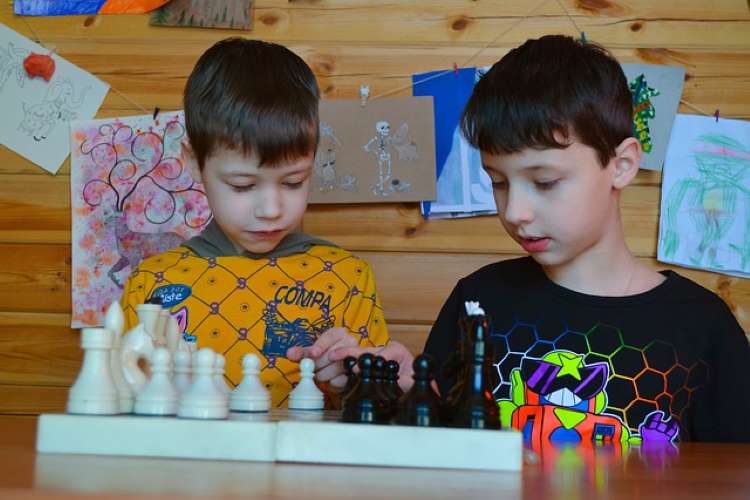David Horsburgh, a British-born educationist, was the first to pioneer the Activity-based Learning method or ABL. It has been widely introduced throughout the country in several states since its inception. But what is it all about? How does activity-based learning help students? Is it helpful in learning science for kids too? If you are reading this article at this moment, then chances are that your mind is filled with questions like these. But hey, don’t worry, we have got your back in this. Keep reading the article till the end to find answers to all your queries.
Learning courses for your kids! Get free trial here
What is Activity-based Learning?
Students are engaged in activities through the stimulation of their senses, such as hearing, smell, vision, and feeling, in activity-based learning. Activity-based learning strategies that make school more exciting for students, allowing them to remember what they’ve learned.
The old Chinese proverb, “Tell me and I forget. Show me and I remember. Involve me and I understand,” perfectly sums up activity-based learning.
ABL is one example of child-friendly education, as mandated by India’s Right to Education (RTE) Act.

How Activity-based Learning Helps the Student?
A visible improvement in children’s learning and psychology has been created by the ABL method, if observers are to be believed. From selecting their daily activity card to marking their attendance, children learn to make independent choices at a young age. Games, rhymes, painting, and songs are used to teach a letter or a phrase, shape a sentence, do math and science, or grasp a concept with each milestone. After meeting all of the milestones in a subject, the child receives an Exam Card. If a child is missing for one day, he resumes where he left off, unlike the old method, which required the child to discover on his own what he had forgotten.
Activities to raise awareness about the climate, sanitation, hygiene, and nutrition are included in the curriculum. Innovative techniques, such as puppet shows and song and rhymes, are used to convey these messages.
Activities based Learning for Kids
Activity-Based Learning (ABL) is a teaching approach that encourages children to learn at their speed by engaging in a range of supervised activities. It’s a more engaging and collaborative form of instructing kids. It allows for the tracking of important factors like voice, coordination, social skills, and motor skills, among others.
It’s a fun way to learn because it promotes brain growth in children by offering continuous stimulus and prompting responses. Exploration, experimentation, and speech are three ways to accomplish activity-based learning.
Forms of ABL
Activity-based learning comes in a variety of forms.
Activity-based learning can be divided into two categories. The student-centric approach is one in which the instruction is focused on the student. This encourages self-study. The teacher-centric approach is the second form, in which the teacher takes the lead and directs the student through the entire process.
Also Read: Why Activity Based Learning is Important? 5 Benefits of Activity Based Learning for your Kids
Activity-Based Learning’s Advantages
Activity-Based Learning has numerous advantages, especially in the early stages of growth. Let’s take a look at some of the advantages:
- It helps children to be curious and self-sufficient. It encourages them to think critically. It provokes their attention, making them more active rather than passive. The children become more conscious of their surroundings. Its focus is on the approach of learning by doing.
- It promotes the growth of social skills. It boosts their self-esteem, puts their teamwork skills to the test in groups, and enhances their communication abilities. The kids are taught to set goals for themselves and come up with innovative solutions.
- It improves one’s memory. This holds for adults as well as children. We know what we do for a longer period than what we read or listen to. For activity-based learning, the retention and recall rates are unquestionably higher.
- It allows them to openly express themselves. Children benefit from activity-based learning because it encourages them to communicate with their feelings and express them.

Some more Advantages
- Persistent presence. This is maybe the most critical advantage. Activity-based learning, unlike classroom instruction, is not threatened by inattention. The children are unable to wander because they are actively involved in every move.
- Skill variability: Activity-based learning makes extensive use of this function. Not all children understand concepts at the same time, at the same rate, or to the same degree. Even in terms of learning abilities, each child is special. Activity-based learning allows each child to learn at his or her own pace, removing the burden of time or pace.
- Motivation: Each child unquestionably feels a sense of achievement after completing each operation. Each of their accomplishments inspires them. This boosts their self-assurance and encourages them to believe in their abilities.
Why Activity-based Learning is Important?
With each passing day, a learning strategy becomes more global and quicker. A modern education system incorporates technology into the classroom. In this technological era, modern teaching aids are extremely necessary and favoured. The growing amount of digital knowledge that is all around us, coupled with applied technology now being infused into learning environments, has influenced both the classroom and the workplace.
A healthy adult is born not only from a child who has been taught important social and emotional lessons but also from a child who has been taught important social and emotional lessons. These lessons digitally empower his or her decision-making abilities, as well as their ability to communicate with others and a sense of self.
Learning courses for your kids! Get free trial here

Activity-based Learning Example
#When attempting to comprehend something real, rather than something virtual or imagined, real objects function better. This form of teaching will make science lessons a lot more interesting. The best thing is that this can be done with the efforts of both teachers and students.
#It’s possible that returning to the same walls and gates would become tedious. Consider changing your classroom into a science centre. Isn’t it thrilling? To incorporate the excitement and create a conducive atmosphere for the time, you can create your own thematic classroom space.
#Parents assist young students in creating assignments, while older students complete them on their own. Whatever the case may be, students gain knowledge of the project subject they are working on. Daily project work not only improves subject awareness but also breaks up the monotony and stimulates the desire to learn more clearly.
Some more Examples of ABL
#Images have dominated the attention-getting landscape for decades. A documentary, a film, or a lesson may be used. Students would be interested in some kind of video. Even a short news video could pique the attention of students who are tired of looking at the blackboard all of the time. Breakthrough their glass ceiling by enrolling them in video lessons.
#Students may become fatigued from sitting in the same position for long periods. Changing the atmosphere can have a huge impact. Try going to a different classroom or, better still, a different school. Let them take a class while sitting under a tree. Being in tune with nature will provide a welcome change for both you and your students.
#The best way to get students interested in class is to enable them to be engaging. A teacher’s statement that he or she enjoys hearing doubts, no matter how silly, is a powerful motivator for a student to pay attention in class. If the students aren’t interested in the class, a separate question and answer session is a good way to get everyone talking.
Examples
#Though creating storyboards can be time-consuming, it is better suited for younger students. A sine map describing differentiation and integration may be useful for students to see and learn from even in math. It could be created by the teacher or students, and it could be shown in the classroom so that students can see it regularly and learn the concepts.
#Who doesn’t like playing in the classroom? Consider purchasing any scrabble games or word puzzles to help you learn new words or concepts. Students would enjoy it because they would be able to try something different, and teachers would benefit from it as well.
Conclusion
To summarise, the activity-based learning approach is the ideal teaching method, especially for children. This approach has increased in value to the point that even toymakers are using it to develop activity-based and educational toys. This is done to help keep toddlers busy and stimulate their minds!
Hopefully, you found this article helpful enough, in case of any feedback or query, feel free to use the comment box below. And if you are looking for more informative articles like this, keep your eyes here.
Also Read: Math Activities for Kindergarten: Making Maths Fun & Interesting For Kids








Good tips for children.